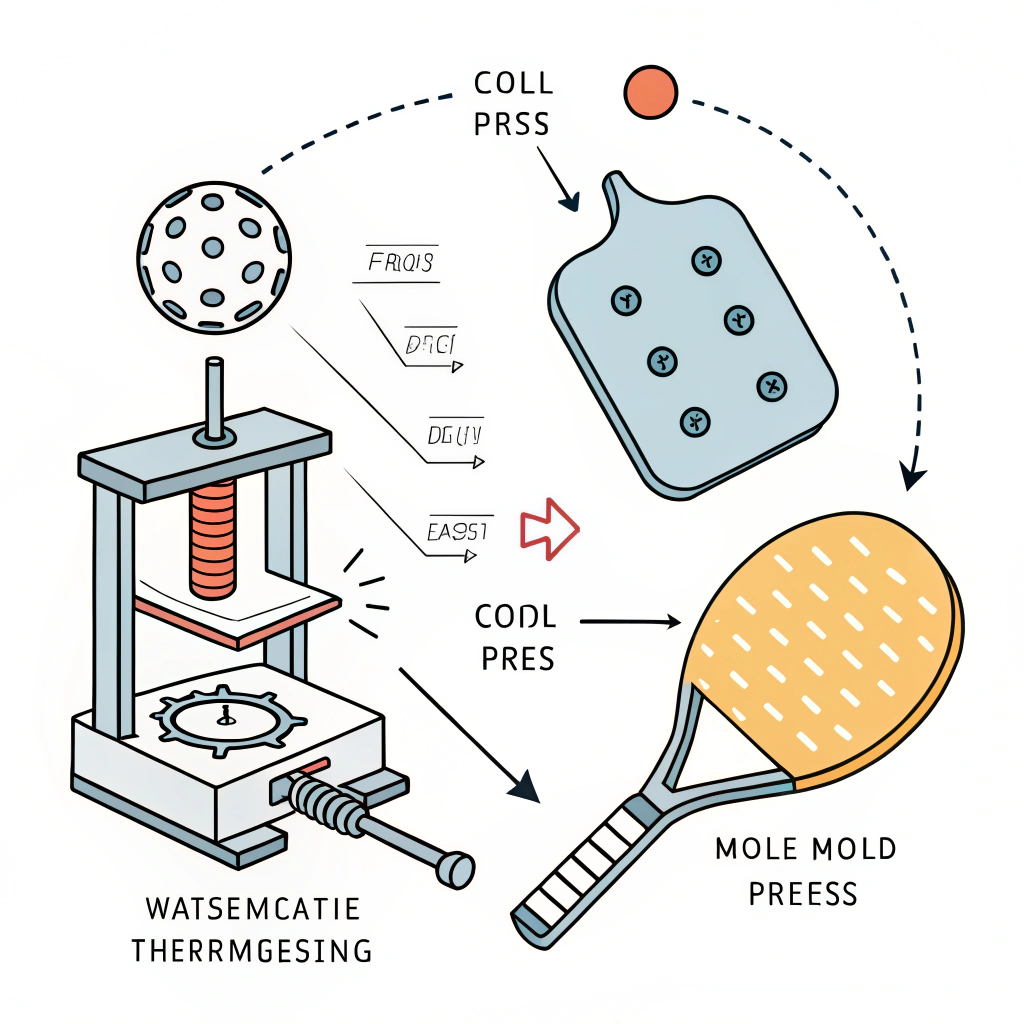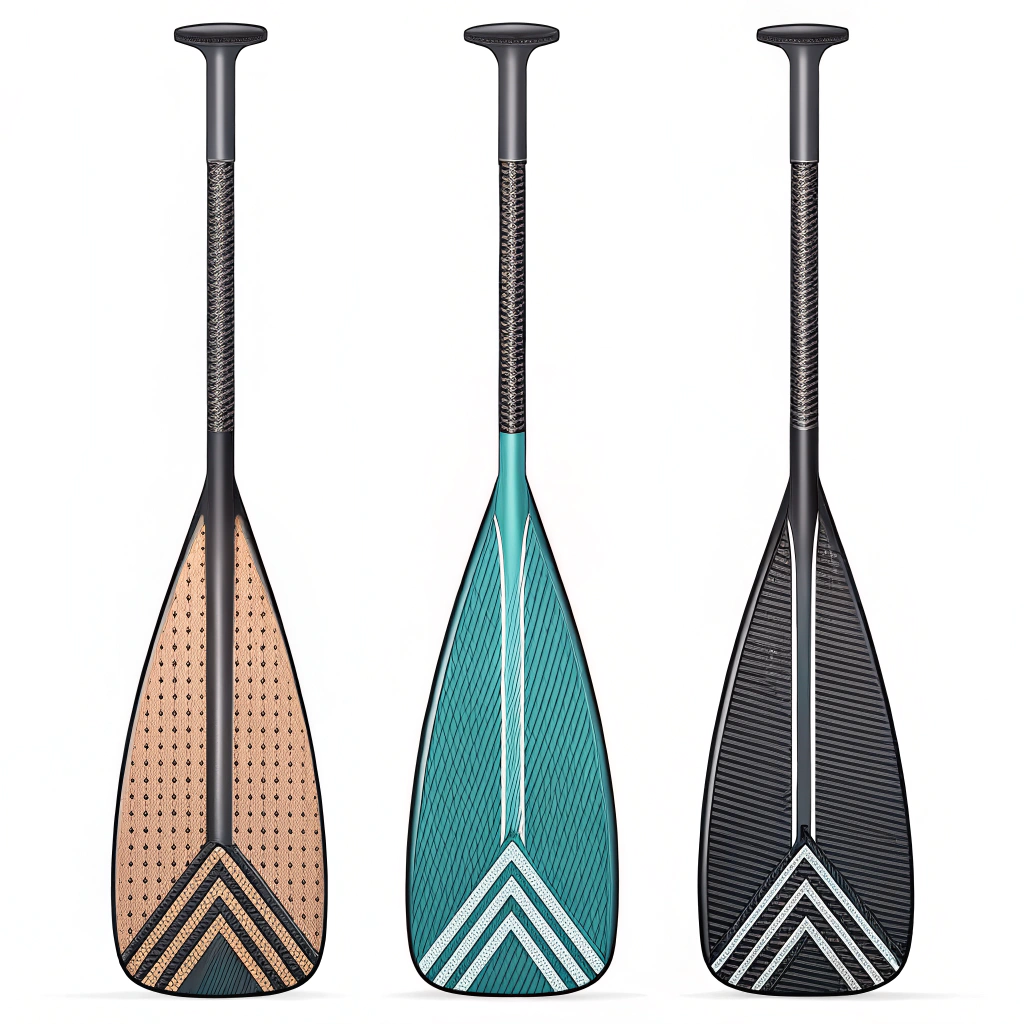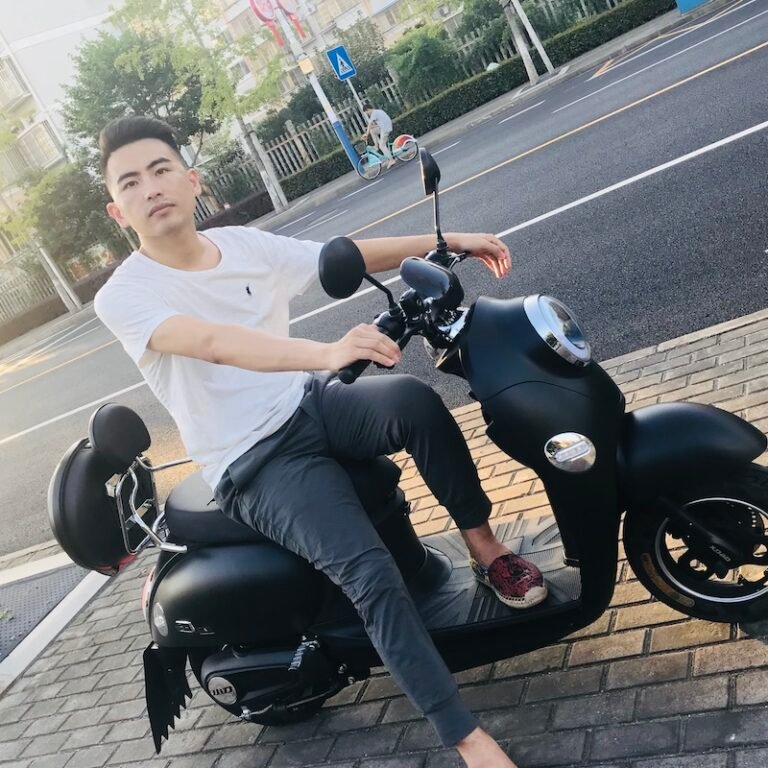High-performance pickleball paddle production combines cutting-edge materials and production methods to deliver equipment that meets rigorous demands for performance, durability, and consistency. In this article, we compare various production techniques and material choices to help procurement managers and sports equipment distributors make informed sourcing decisions.
For high-performance pickleball paddles, manufacturing is not just about producing a product—it’s about engineering equipment that can consistently deliver precision, speed, and comfort. Leading manufacturers, such as NEX Pickleball, adopt advanced production processes like hot pressing1, cold pressing2, and thermoforming3. Each technique offers unique benefits and challenges, especially when paired with premium materials like various types of carbon fiber, fiberglass, and composite materials4. This in-depth comparison aims to clarify these differences and assist you in selecting the right combination for your market needs.
Hot pressing involves heating the paddle materials and applying pressure to meld them into a cohesive, high-strength structure. This process is widely used for its production efficiency and structural integrity.
-
Advantages:
- High production efficiency suitable for large-scale manufacturing.
- Results in robust paddles with excellent impact and wear resistance.
- Strong bonding ensures the paddle maintains shape even under competitive game stress.
-
Disadvantages:
- High initial equipment investment.
- Elevated temperatures may slightly alter the intrinsic feel of premium materials, potentially impacting the tactile response players expect.
In contrast, cold pressing shapes paddle materials at room temperature using mechanical pressure. This approach prevents thermal alteration of the materials, preserving their natural properties.
-
Advantages:
- Greater precision in managing paddle thickness and material consistency.
- Preserves the natural characteristics of materials, offering a superior ball feel.
- Lower risk of thermal degradation, ensuring consistent performance over time.
-
Disadvantages:
- Slower production cycles can affect overall efficiency.
- Requires advanced machinery to precisely control pressure, often leading to higher production costs per unit.
Thermoforming involves heating materials to a softening point before molding them into the desired shape using custom molds. This method is ideal for intricate paddle designs and achieving precise material distribution.
-
Advantages:
- Allows for complex and innovative paddle shapes.
- Maintains material stability for enhanced performance.
- Flexible production suitable for custom orders and premium paddle lines.
-
Disadvantages:
- Extended production times and increased equipment costs.
- Best suited for niche, high-end products rather than high-volume production.
To provide a clear picture, see the table below summarizing the key aspects:
| Production Process | Advantages | Disadvantages | Best Suited For |
|---|---|---|---|
| Hot Pressing | High efficiency, strong durable structure, reliable bonding | Higher temperature effects, significant equipment cost | Large-scale manufacturing, high-performance paddles needing durability |
| Cold Pressing | Precision control, preserved material properties, enhanced ball feel | Longer cycle times, precision equipment demands | Producing paddles where ball control and tactile feedback are critical |
| Thermoforming | Intricate designs, superior material distribution, highly customizable | Longer production time, higher costs | Custom premium paddles and intricate design requirements |
Carbon fiber is the go-to material for many competitive paddle players due to its superior strength and responsiveness. At NEX Pickleball, several types of carbon fiber are used to tailor performance for different playing styles:
- 3K Carbon Fiber: Known for its strength and flexibility, this material delivers excellent durability with significant rebound force. It also helps reduce vibration.
- 12K Carbon Fiber: With a higher thread density, 12K offers a smoother paddle face, increased hardness, and extra durability. It is ideal for competitive play where extreme impacts are common.
- T300 Carbon Fiber: Balancing tensile strength with light weight, this variant supports a balanced swing without sacrificing performance.
For the manufacturer, the choice between these options depends on the desired performance balance between power, control, and long-lasting durability.
Fiberglass paddles serve as an excellent intermediate solution, providing a wider sweet spot and improved flexibility. They are well-suited for players who value a balance between power and control. High-quality options like E-Glass Fiberglass deliver superior elasticity and a controlled ball feel.
Additionally, many manufacturers opt for composite materials that merge the benefits of carbon fiber and fiberglass, such as:
- Carbon Fiber and Fiberglass Composite: Masks the individual trade-offs and creates a balanced paddle with both strength and flexibility.
- Bamboo Core Composite: Offers a lightweight dynamic with high impact resilience, giving players a direct hitting feel.
-
Honeycomb Core Materials: These come in various types—Nomex, aluminum, or polymer. For example:
- Nomex Honeycomb Core5: Provides robust shock absorption and structural integrity.
- Aluminum Honeycomb Core: Offers a balance between power and control, ideal for mixed playing styles.
- Polymer Honeycomb Core: Focuses on elasticity and reducing vibration for a more comfortable playing experience.
The matching of production processes with material selection is critical. For instance, thermoforming works exceptionally well when molding intricately designed paddles incorporating composite materials, ensuring balanced weight distribution and superior tactile feedback.
When sourcing sports equipment, especially in a competitive market, customization and quality control are determining factors for success. Manufacturers like NEX Pickleball offer custom paddle options that allow you to specify design elements, weight, balance, grip size, and even surface treatment.
-
Material Selection:
- Choose between types of carbon fiber, fiberglass, or composite options based on the target customer’s playing level.
- Evaluate the durability and performance benefits relative to the intended use—whether for recreational play or high-level competitive matches.
-
Production Technique:
- The choice between hot pressing, cold pressing, and thermoforming can affect production costs and lead times.
- Ensure the production process chosen aligns with the quality expectations and performance requirements of your clientele.
-
Core Structure:
- The selection of the core material, whether Nomex, aluminum, or polymer honeycomb, directly influences the paddle’s shock absorption, vibration reduction, and balance.
- Consider how core materials perform under varying environmental conditions—a critical factor for distributors covering diverse geographic markets.
To summarize these points, consider the following table:
| Customization Aspect | Options Available | Impact on Performance |
|---|---|---|
| Material | 3K, 12K, T300 Carbon Fiber, Fiberglass, Composites | Power, control, durability, vibration reduction |
| Production Process | Hot pressing, Cold pressing, Thermoforming | Efficiency, tactile feel, design complexity |
| Core Material | Nomex, Aluminum, Polymer Honeycomb | Shock absorption, weight distribution, comfort |
Beyond material and process selection, stringent quality control measures are essential. Advanced testing protocols ensure that each paddle meets predefined standards for structural integrity and performance consistency. NEX Pickleball’s commitment to quality control includes rigorous testing procedures that verify the paddle’s performance under intense conditions, ensuring that each unit delivers a high level of play accuracy and durability.
In competitive sports markets, the long-term performance and cost-effectiveness of equipment are pivotal. When comparing production options, consider the following:
- Performance Consistency: High-quality production methods should consistently yield paddles with uniform weight, balanced design, and reliable hitting surfaces.
- Cost and Efficiency: While processes like cold pressing and thermoforming offer superior control and customization, they might extend lead times and increase unit costs. Balancing production costs against expected market price points is crucial.
- Supplier Reliability: Established manufacturers that use integrated production processes and thorough quality control, like NEX Pickleball, are often better positioned to meet large-scale contracts while maintaining product quality.
Procurement managers should evaluate not just the immediate cost savings but also the long-term benefits of a robust, precision-engineered product. While up-front investments in advanced manufacturing techniques may be higher, the enhanced performance and durability of the final product often lead to stronger market positioning and customer satisfaction.
In practical terms, sourcing paddles with a carefully selected combination of high-quality materials and an appropriate production process could reduce issues in the field and improve overall playing experience. Manufacturers who can offer tailor-made solutions—right down to grip size and custom surface finishes—provide an edge when dealing with specialized requirements from competitive sports organizations.
Deciding on the right production process and material is a complex yet essential part of enhancing your product portfolio. With each method—whether hot pressing for large-scale durability, cold pressing for precision control, or thermoforming for custom design—there are clear benefits and trade-offs. Similarly, selecting the right material, from various carbon fiber types to advanced composites, directly affects the paddle’s performance.
For procurement managers and B2B sports equipment distributors, embracing innovation and meticulous quality control is key. NEX Pickleball’s integrated manufacturing approach ensures that every paddle not only meets high-performance standards but also offers the versatility required in today’s competitive sports environment. We recommend aligning your sourcing strategy with a supplier who can balance production efficiency, material quality, and customization, ensuring products that add real value to your portfolio.
Taking a holistic view of performance, cost, and customer satisfaction will help you make a confident procurement decision that supports both the immediate and long-term needs of your business.
-
Are pickleball gloves worth it?
A well-fitted glove can provide an enhanced grip on the paddle, ensuring better control and accuracy, particularly in hot and humid conditions where sweat might impair grip performance. -
How to protect fingers in pickleball?
Finger tape is a common solution for protecting fingers during play. Its unique material blend is designed to adhere to itself rather than to the skin, reducing friction and potential injuries.
-
hot pressing: Click to read about how hot pressing is used in manufacturing to bond materials under heat and pressure, optimizing production efficiency and structural strength. ↩ ↩
-
cold pressing: Click to explore the cold pressing process, which preserves material characteristics by using mechanical pressure at room temperature for precise shaping. ↩ ↩
-
thermoforming: Click to learn about thermoforming, a method involving heating materials to reshape them, ideal for complex designs and custom production runs. ↩ ↩
-
composite materials: Click to discover the benefits of composite materials in manufacturing, which combine different substances to achieve balanced strength, durability, and flexibility. ↩ ↩
-
Nomex Honeycomb Core: Click to understand the role of Nomex Honeycomb Core in enhancing shock absorption and structural performance in high-performance sports equipment. ↩ ↩







